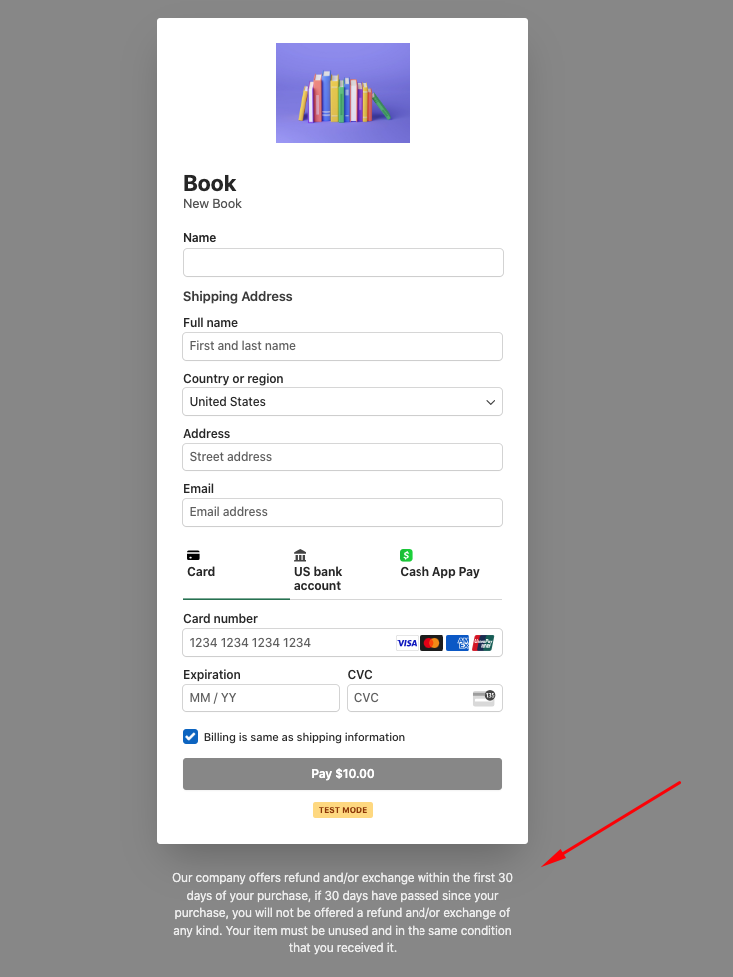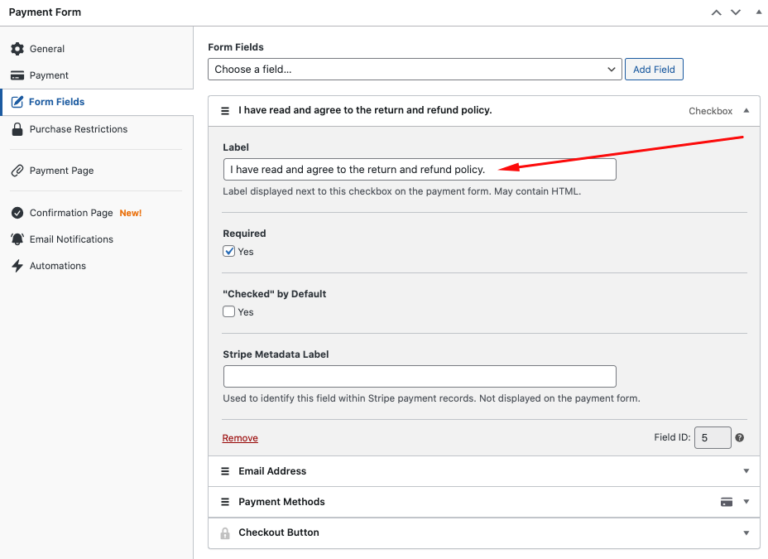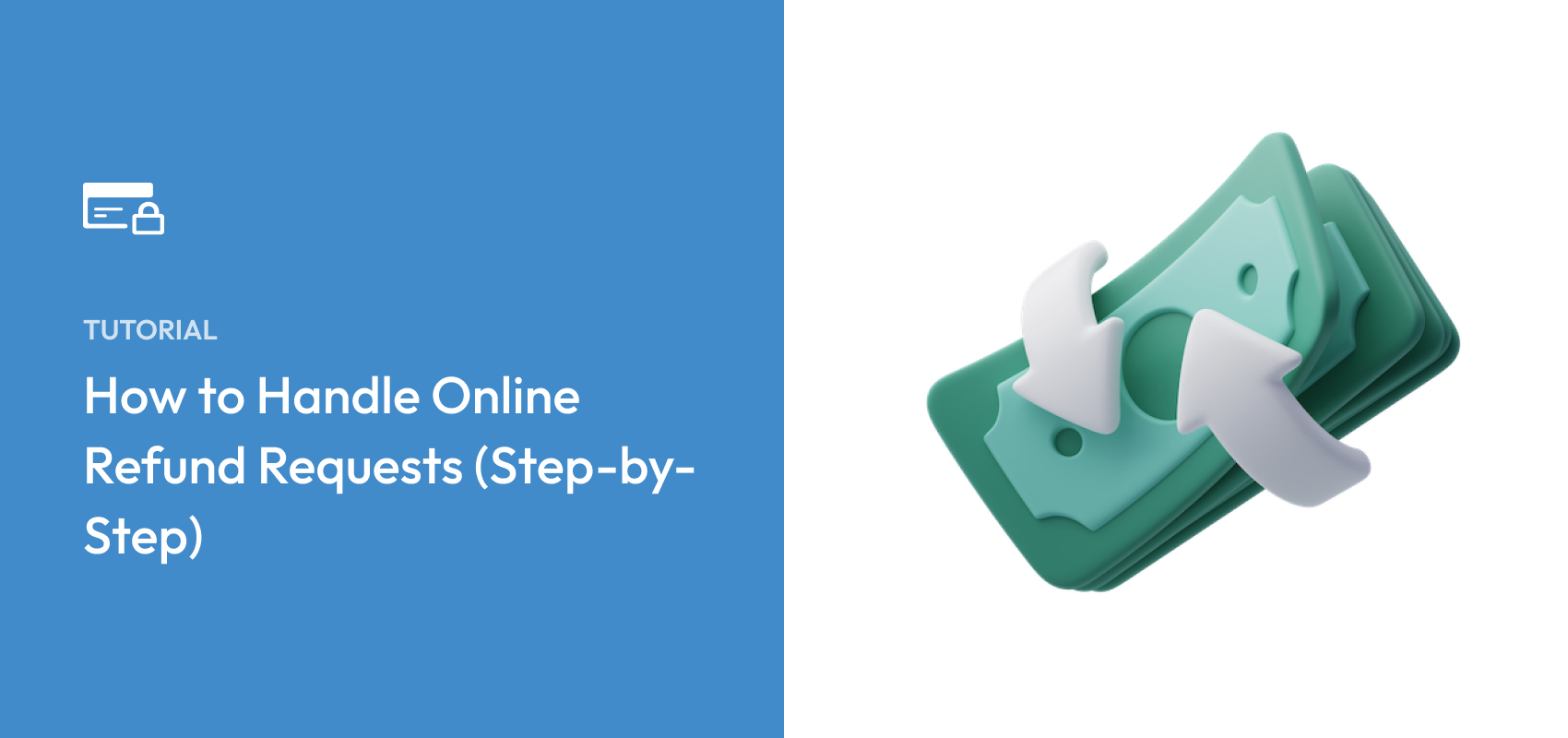How to Handle Online Refund Requests (Step-by-Step)
Last updated on
Do you want to know how to handle online refund requests?
While refund requests can be frustrating, it’s important to know that it’s just not possible to please every customer.
Your goal should always be to avoid payment disputes and giving out refunds. Most of the time, this can be accomplished simply by delivering a product or service that people are satisfied with while maintaining a clear marketing message refined for the right people.
However, as we’ve already stated, refunds are inevitable for all online businesses. To help you handle refund requests, we’ll share a few steps you can take.
What Should You Do When a Customer Requests a Refund?
How you respond to a refund request can determine the growth of your business. Think about the last time you were on the other side of a difficult refund. How did it make you feel? More than likely, it made you lose trust in the business. Then, you probably told a few people about your negative experience.
However, we all know the relief that comes with a smooth and prompt refund. Even if the product didn’t meet your needs, you can at least still respect the business.
It’s important to find a balance when it comes to refunds and your business. Ignoring refund requests or enforcing an unreasonable “no refunds” policy will damage your reputation and how others view your business. But, if you refund everyone with the slightest complaint, you’ll invite people to take advantage of you.
So, how should you handle refund requests? Let’s take a look.
Step 1: Handle Refund Requests Promptly
When a customer asks for a refund, your first step is to act quickly.
The customer is likely already upset about the situation. To diffuse the tension, you should respond in a timely manner.
Even if you’re unsure how to respond immediately, acknowledge the request for a refund immediately and let the customer know you’ll have a solution soon.
Step 2: Investigate the Facts Thoroughly
Next, gather information and look through your records to make sure the customer’s story makes sense.
For example, you’ll need to verify the customer’s purchase date to ensure the request falls within the timeframe outlined in your return and refund policy. You wouldn’t want to refund someone who made a purchase three years ago.
If you must gather more customer information, avoid being argumentative or suspicious. Ask probing questions that don’t insinuate the customer is a liar.
- Bad question: “Since you didn’t finish the course, how do you know you aren’t satisfied?”
- Good question: “I see you didn’t make it to the end of the course. What made you stop?”
Stick to open-ended questions. If you only ask yes/no questions, the customer will tell you whatever they think you want to hear to get the refund faster.
Keep your eyes open for potential credit card fraud. Unfortunately, some customers will use returns as a way to keep their product/service and the money, but this is technically fraud.
In fact, recent studies show that 30% of all online shoppers intentionally look for ways to overspend and return the products they don’t want later in exchange for a refund.
Step 3: Consult Your Refund Policy
Every online business should display a refund policy on its site. If you have your customers sign contracts, it should be included there, too.
Customers are less likely to request a refund if they know their problem falls outside of your refund policy. Similarly, a refund policy assures customers they have a course of action if they’re unsatisfied.
Ideally, your policy should cover exactly how many days customers have to return the item in exchange for a refund in addition to the condition requirements. You will need to tailor your policy to your specific needs.
Using WP Simple Pay, the #1 Stripe payments plugin for WordPress, you can easily add a return and refund policy to a dedicated payment page using the drag-and-drop payment form builder.
As you can see in this example, the refund policy is clearly stated just below the payment form.

If you aren’t sure how to respond to the customer’s specific situation, review your policy to see if you already have guiding language. It’s important to follow your policy because those are the conditions under which the customer made their purchase.
Need help creating a return and refund policy? Check out our detailed guide on how to avoid payment disputes with a return and refund policy.
Additionally, if you have your return and refund policy posted on a different page on your site, you can use WP Simple Pay’s payment form builder to add a custom form field to your payment form that requires your customers to check the box confirming that they’ve read and accepted it.

Step 4: Look for a Non-Refund Remedy
In a lot of cases, you may be able to solve the customer’s problem in a different way that doesn’t involve refunding money. This way, you can make the customer happy without losing anything.
This is especially useful if the customer’s problem is a mistake you made. For example, if they received a damaged product in the mail, you might simply send them a new one. If the customer was unhappy with a service you provided, you might offer comped services or a discount code.
This method technically increases your costs, but it’s better than losing the sale altogether.
If the customer doesn’t like your proposed solution, it’s tempting to ask him or her, “What can I do to make this right?” This question can be problematic. Some customers will offer a reasonable alternative, but others will make outrageous demands you can’t accommodate.
Asking what they’d like and then denying their request will further degrade their experience. If they don’t like your proposed solution, simply refund their money.
Step 5: Make a Reasonable Decision
If the customer’s complaint falls within your refund policy, you have to refund their money. Don’t try to wiggle your way out.
If their complaint falls outside of your policy, don’t be ashamed to refuse the refund. You aren’t responsible for refunding services they consumed years ago.
With all that being said, don’t be afraid to bend the rules. Treat your refunds on a case-by-case basis. If you refuse a refund because the request is one day late, the customer will understand but won’t feel good about the experience.
It’s generally a bad idea to propose a complex remedy that forces the customer to calculate what they’re actually getting back. If they don’t understand your solution, they’ll assume you’re just trying to get out of the refund.
For example, this is a bad solution: “We’ll refund 45% of what you paid, give you free access to our basic courses, a 20% coupon for our premium courses, and give you 10 consulting hours that you can use for yourself or gift to a friend.”
Skip the complexity and just refund the money.
Step 6: Follow Up With Your Decision and Clear Steps
Once you’ve decided how to respond to the customer’s refund request, your next step is to reply with a clear decision.
Send them an email that outlines your resolution. If you don’t refund their money, explain why in clear, non-judgmental language. Keep your emotions out of it.
If you will refund their money, apologize briefly for their unhappiness and tell them when and how they’ll receive the refund. Send the money back right away.
Let’s say a customer never reaches out to you directly to request a refund and instead asks their card-issuing bank to reverse the transaction. This is referred to as a chargeback request.
You can use Stripe Reports to keep track of payment disputes and respond accordingly.
To learn more, see our detailed guide on how to fight chargebacks.
Step 7: Ask for Some Feedback
If there is no tension between you and the customer, you’ll find asking for feedback about your products and services useful. At this point, the customer will have what they want (the refund), so they should be willing to help.
For example, if a customer complains that your landing page over-hyped your service, you could ask them to point out the specific elements (copy or images) that gave them the wrong impression.
Then, use this information to optimize your website and landing pages so you attract the right kind of conversions.
If you think the customer was especially displeased with their experience, skip this step. You’ll just annoy the customer by asking for more time.
Step 8: Review Your Refund Policy
You might not do this after every refund, especially if you have a high volume of sales and, inevitably, many refund requests. However, you should review your policy any time a refund situation isn’t cut-and-dry.
The purpose of a refund policy is to protect you and the customer. It should be designed to ensure both parties have a positive experience and that neither party takes advantage of the other.
After refunding a customer’s money, evaluate whether the refund policy provides a reasonable solution to that situation. If it didn’t, ask yourself how you should modify the refund policy to create a better outcome in the future.
Step 9: Keep Your Cool
We’ve explained what you should do if a customer requests a refund, but here’s our last piece of advice. It’s arguably the most important.
Don’t let your emotions get the best of you! Processing refunds is a necessary part of running an online business.
It’s easy to become defensive, annoyed, or hurt when someone asks for their money back. None of these feelings will help you resolve the situation and satisfy the customer. Make sure your refund decisions are based on facts. Re-read your email correspondence with your customers to filter out any poor language.
That’s it! We hope this advice on how to handle online refund requests will help protect your reputation and grow a satisfied customer base.
If you liked this article, you might also want to check out our guide on how to create a Stripe payments landing page in WordPress.
What are you waiting for? Get started with WP Simple Pay today!
To read more articles like this, follow us on X.
Disclosure: Our content is reader-supported. This means if you click on some of our links, then we may earn a commission. We only recommend products that we believe will add value to our readers.


